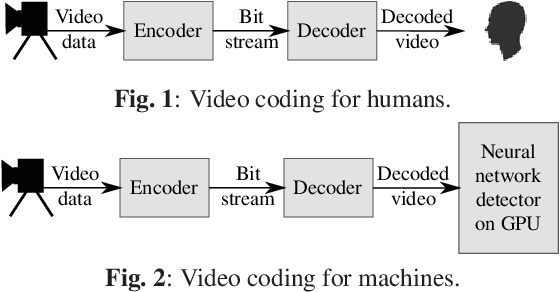On Intra Video Coding and In-loop Filtering for Neural Object Detection Networks
Paper and Code
Mar 11, 2022



Classical video coding for satisfying humans as the final user is a widely investigated field of studies for visual content, and common video codecs are all optimized for the human visual system (HVS). But are the assumptions and optimizations also valid when the compressed video stream is analyzed by a machine? To answer this question, we compared the performance of two state-of-the-art neural detection networks when being fed with deteriorated input images coded with HEVC and VVC in an autonomous driving scenario using intra coding. Additionally, the impact of the three VVC in-loop filters when coding images for a neural network is examined. The results are compared using the mean average precision metric to evaluate the object detection performance for the compressed inputs. Throughout these tests, we found that the Bj{\o}ntegaard Delta Rate savings with respect to PSNR of 22.2 % using VVC instead of HEVC cannot be reached when coding for object detection networks with only 13.6% in the best case. Besides, it is shown that disabling the VVC in-loop filters SAO and ALF results in bitrate savings of 6.4 % compared to the standard VTM at the same mean average precision.
 Add to Chrome
Add to Chrome Add to Firefox
Add to Firefox Add to Edge
Add to Edge